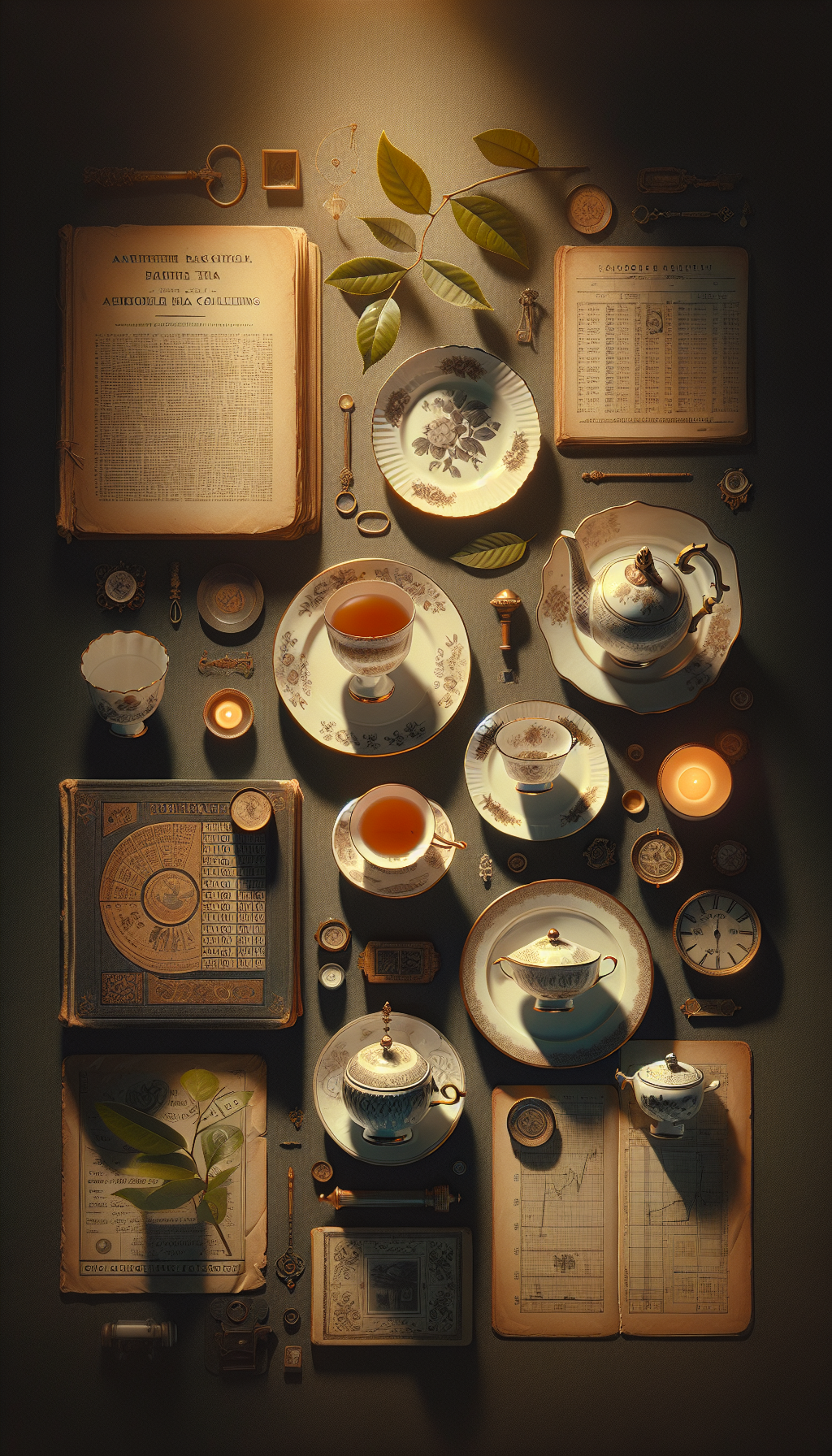A Fine Quality Chinese Haitangzun Vase Circa Early 20th Century
The haitangzun—literally “begonia-form” vase—is one of the most charming and technically exacting vessel types in Chinese decorative arts. Its lobed silhouette, recalling a stylized begonia or quatrefoil outline, provided an elegant stage for sophisticated glazing and enamel painting from the Qing dynasty onward. By the early 20th century, at the cusp of late Qing and the Republic period, Jingdezhen workshops revived and refined earlier imperial styles, producing begonia-form vases of remarkable finesse for both domestic literati taste and an international market. This article explains what defines a fine early 20th-century haitangzun, how to authenticate and date one, what condition issues to watch for, and what most influences value.
Understanding the Haitangzun Form
Haitangzun refers to a lobed vase with a quatrefoil cross-section. The outline mirrors the begonia flower: four rounded lobes creating alternating concave and convex arcs.
Key form characteristics:
- Plan view shows four lobes of equal size with crisp junctions; asymmetry or uneven lobes suggest lesser quality or later copies.
- Walls should be evenly potted, neither too thick at the lobe peaks nor weakly thinned at the valleys.
- The profile typically includes a gently swelling body rising to a narrow, sometimes waisted neck, and a flared, lobed rim echoing the foot and body outline.
- The footrim is usually shaped to follow the quatrefoil, a demanding touch that reveals the potter’s competence.
The begonia form was championed in the 18th century (especially Yongzheng and Qianlong periods), sometimes in monochromes, famille rose (fencai), or Beijing enamels on metal. Early 20th-century porcelain haitangzun vases consciously quote these earlier imperially favored prototypes while adding Republic-era drawing styles and color sensibilities.
Typical sizes in the early 20th century range from about 20 to 35 cm in height, though smaller scholar’s pieces and larger display examples exist. Handles are uncommon on pure haitangzun forms, but some pieces adopt archaistic additions like ruyi-scroll handles or molded chilong, especially on revivalist works.
Historical Context: Late Qing to Early Republic
Circa 1900–1930 was a transitional period:
- Late Guangxu (1875–1908) and Xuantong (1908–1912) still operated under imperial patronage structures, though diminished.
- The Republic period (1912–1949), particularly the 1910s–1930s, saw a renaissance of technical excellence at Jingdezhen under private kiln organization. Skilled decorators—many trained in courtly or export traditions—produced works that rivaled 18th-century quality.
This era’s haitangzun vases often blend:
- Archaistic reverence: Qianlong-inspired forms and motifs (bats and peaches for longevity, lotus scrolls, phoenix-and-peony, ruby or yellow sgraffito grounds, and reserved landscape or bird-and-flower panels).
- Literati taste: finely penned landscapes, poetic inscriptions, or seal marks nodding to scholarly culture.
- International appeal: high-finish surfaces and vibrant famille rose palettes aimed at collectors in Shanghai, Hong Kong, and overseas.
Apocryphal marks—especially six- or four-character Qianlong or Yongzheng reign marks—are extremely common on early 20th-century pieces and should be read as homage rather than deception in many workshop contexts. Authentic Republic-period shop seals and occasional artists’ signatures also occur, though less often on lobed forms than on plaques or meiping.
Materials, Decoration, and Craftsmanship
A fine early 20th-century haitangzun exhibits coherence between potting, ground, enamels, gilding, and base finish. Look closely at:
Porcelain body and glaze
- Paste: Smooth, fine, and relatively white, with a subtle warm tone. Under magnification, expect a tight, even texture with occasional minute iron specks in the unglazed foot.
- Glaze: Clear and bright, usually pooling subtly in corners where lobes meet. Early 20th-century glazes can present a faint bluish cast under daylight; they are typically even, with fine bubble structure visible under a loupe.
- Footrim: The glaze normally stops before the rim, exposing the biscuit. Good examples have a neatly chamfered foot with a slightly buff-to-ivory color and honest wear at lobe peaks consistent with handling and age. Avoid exaggerated tea-stained patina or sand-blasted wear—common on recent forgeries.
Enamel palette and technique
- Famille rose (fencai) dominates: opaque white and pink enamels, apple green, turquoise, iron red, aubergine, and yellow used in soft, layered shading. On quality works, feathering and gradation are subtle even in tiny foliate terminals and bird plumage.
- Line drawing: Fine, controlled outlines in iron red or black, often combined with “boneless” color washes on petals and leaves. Republic-era draughtsmanship is typically crisp, with elegant calligraphy where present.
- Grounds: Ruby (rose-pink), canary yellow, or turquoise grounds with sgraffito scrolling are popular. Precision around the edges of reserved panels is a tell-tale of workshop quality.
- Gilding: Highlighting rims, scrolls, or medallions. On genuine age, gilding wear appears on high points and mouth rim, rubbed to a soft matte rather than sharp abrasion.
Motifs and layout
- Panels: Landscapes with scholar figures, birds-and-flowers (huaniao), butterflies and peonies for prosperity, or bats (fu) with peaches (shou) for longevity are canonical pairings.
- Borders: Key-fret, ruyi-head, and lotus scroll bands articulate transitions at shoulder and foot. On lobed vases, borders must negotiate the curves cleanly; smudged or misaligned borders indicate rushed decoration.
Marks and inscriptions
- Base marks: Frequently iron-red or overglaze blue seal-script “Da Qing Qianlong Nian Zhi” or “Yongzheng Nian Zhi,” sometimes within a double square. These are typically apocryphal on early 20th-century pieces.
- Republic marks: “Jingdezhen zhi” or “Zhonghua Minguo” (Republic of China) marks appear but are less common on lobed forms than on other vessel types.
- Poetic inscriptions: When present, they may include a cyclical date (Ganzhi), studio name, or colophon. Be cautious—later additions are possible.
Appraisal and Authentication: What to Look For
Dating a haitangzun around the early 20th century involves corroborating multiple indicators rather than relying on any single feature.
Potting and proportions
- Symmetry: All four lobes should read evenly to the eye and under calipers. Master potting achieves consistent wall thickness through curvature—feel for evenness by carefully weighing the vessel in the hand and tapping lightly with a fingernail near different lobes to gauge the uniformity of the ring.
- Neck and rim: The rim should echo the quatrefoil convincingly; distorted or “soft” lobes at the mouth often point to inferior quality.
- Weight: Early 20th-century examples are well-balanced—neither heavy as late 19th export work nor ultra-thin as certain high-imperial pieces.
Glaze and foot
- Footrim texture: Slight grain from trimming tools with natural wear on the peaks; modern copies often over-polish or apply false staining. The color should be consistent with the body; glaring orange “rust” all over is suspect.
- Spur marks: None expected; these vases were fired on the footrim.
- Kiln grit: Occasional tiny grit near the foot is acceptable; heavy grit or sanded edges are warning signs.
Enamels and painting
- Brush discipline: Look for breathing room around motifs; competent painters avoid crowding design elements on a complex lobed surface.
- Palette: Republic-era palettes are saturated yet refined. Over-bright, glassy enamels that pool thickly or sit in puddles can indicate later manufacture.
- Gilding wear: Genuine gilding wears to a soft sheen on contact points; conspicuously intact gilding on an otherwise “old” base deserves scrutiny.
Marks and signs of age
- Marks: Treat Qianlong/Yongzheng marks as homage. Assess whether the style and quality align with early 20th-century work rather than 18th century. Seal script that is too crude or printed-looking is a red flag.
- Surface wear: Expect honest micro-abrasions on projecting contours, not uniform matte wear over the whole body. UV light will often reveal later overpaint; restorations fluoresce differently from original enamels.
Comparative dating
- Late Qing vs early Republic: Late Guangxu works can have a slightly greyer white glaze and heavier outlines; Republic painting tends to be finer and more pictorial, with sophisticated shading and more confident negative space. Borders on Republic pieces often show greater precision around the lobes.
Provenance and labels
- Old collection labels, typed inventory numbers, or discreet painted accession numbers on the foot can support early 20th-century dating if consistent with mid-century Western collections.
Condition and Conservation Considerations
The lobed architecture of a haitangzun introduces stress points:
- Hairlines: Common at the lobe junctions along the shoulder and rim, visible under strong raking light. Check inside the neck and base with a penlight.
- Chips and frits: Watch the extremities of the lobes on both rim and foot. Minor fritting is acceptable; large rim chips or reshaping reduce value significantly.
- Enamel loss: Flaking or micro-popping on thickly enameled grounds, especially ruby and turquoise. Stable, small losses are tolerable on decorative pieces; extensive inpainting should be disclosed.
- Gilding: Expect edge wear. Heavy regilding is a restoration that affects value.
Care recommendations:
- Environmental stability: 45–55% relative humidity; avoid rapid temperature swings. Direct sunlight will fade famille rose enamels over time.
- Cleaning: Dry dust with a soft brush or microfiber. If needed, a slightly damp cloth with distilled water; avoid detergents and abrasives. Never immerse a repaired piece.
- Handling: Support from the body, not the neck or rim. For transport, double-box with cavity supports that respect the lobed profile.
Professional restoration is acceptable for structurally sound vases, but high-end collectors prefer minimal intervention. Any consolidation of hairlines or retouching should be documented.
Market Values and Collecting Strategy
Value in early 20th-century haitangzun vases hinges on:
- Quality of potting and decoration: The clean execution of the lobes and the sophistication of the painting are paramount.
- Palette and ground: Fine famille rose with well-reserved panels, or richly colored sgraffito grounds with clean transitions, command premiums.
- Condition: Undisturbed examples with light, honest wear can significantly outperform restored counterparts.
- Size and presence: Medium sizes with perfect proportions often sell best; oversized pieces attract attention but must retain balance to avoid seeming ungainly.
- Marks and inscriptions: While apocryphal imperial marks are common, a compelling inscription, studio mark, or plausible artist attribution (when supported by scholarship) can add value.
- Provenance: Early export or mid-century collection history strengthens desirability.
Prices span widely—from modest sums for commercial workshop pieces to strong five figures (and beyond) for top-tier Republic painting on a complex lobed form. As with any category subject to revival and reproduction, authentication and condition analysis are the collector’s edge.
Practical Checklist for Appraisers and Collectors
- Confirm the quatrefoil: Even lobes in plan view; check symmetry with calipers.
- Inspect potting: Consistent wall thickness; no thinning at lobe valleys.
- Examine the foot: Unglazed, neatly trimmed footrim; natural wear on lobe peaks; no artificial staining.
- Assess enamels: Fine line work; nuanced shading; no heavy pooling; gilding with credible edge wear.
- Check for stress points: Rim and shoulder lobe junctions for hairlines; use raking light and UV.
- Read the mark critically: Expect apocryphal Qing marks; judge the whole piece, not the mark.
- Evaluate condition: Disclose and price for restorations, especially at the rim and in enamel grounds.
- Corroborate with provenance: Old labels, inventory numbers, or period collection records add confidence.
FAQ
Q: What exactly defines a haitangzun vase? A: It is a lobed vessel with a quatrefoil or begonia-flower outline, typically mirrored at the foot, body, and rim. The form originated in the Qing dynasty and demanded precise potting to maintain symmetry and structural integrity.
Q: How can I distinguish late Qing from early Republic examples? A: Early Republic pieces often feature finer, more pictorial enamel painting with sophisticated shading and tighter border work around the curves. Bodies are usually well-balanced with a bright, even glaze. Late Qing works can be a touch heavier with greyer whites and bolder outlines. Always judge multiple features together rather than a single clue.
Q: Are Qianlong or Yongzheng marks on these vases genuine? A: On early 20th-century haitangzun vases, such marks are typically apocryphal homages. They do not imply an 18th-century date. Authenticate by form, potting, enamels, and overall quality, not by the reign mark alone.
Q: What condition issues most affect value? A: Rim chips and hairlines at lobe junctions are the most value-sensitive. Extensive enamel overpainting or regilding also lowers desirability. Minor frits and light wear are usually acceptable.
Q: How should I care for a famille rose haitangzun? A: Keep out of direct sunlight, maintain stable humidity, dust gently with a soft brush, and avoid immersion or harsh cleaners. Handle by supporting the body, not the neck or rim, and document any restorations for future reference.
A well-chosen early 20th-century haitangzun brings together architectural elegance and painterly refinement. For the appraiser or collector, mastery of the form’s subtleties—particularly how drawing and potting negotiate the lobes—translates directly into confident dating, accurate condition assessment, and sound valuation.



